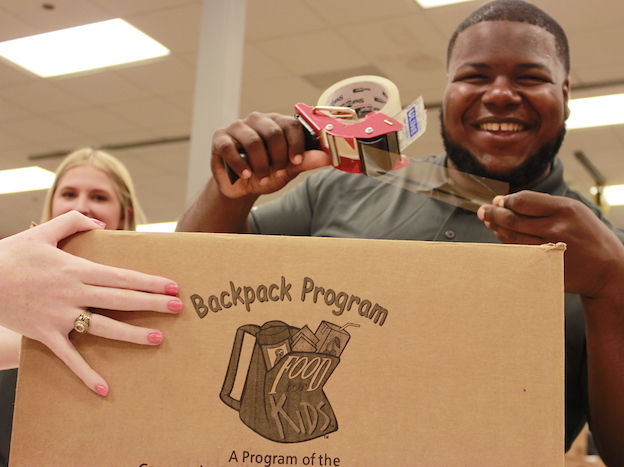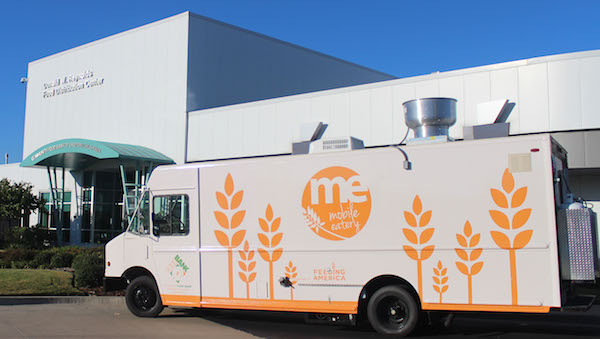
Kim Grider
Special to the Philanthropy Journal
By Kim Grider, CFO of the Community Food Bank of Eastern Oklahoma
Like many businesses, nonprofit organizations face extreme pressure to grow—but instead of focusing on profit generation, these organizations are working towards supporting their social cause. While a nonprofit’s growth is generally a great thing, running an efficient operation and allowing more funds to go to programs that support their cause is equally important. As a result, it also generally means that the financial team can experience tremendous strain from increased funding and employee growth; the bigger an organization grows, the more complex its financial functions become.
 For many nonprofits that start off as small groups of people banding together for a single cause, a simple accounting software like QuickBooks combined with Excel spreadsheets may suffice. But as an organization grows—in funding, funding complexity, employees, and locations—it can put a strain on the finance and accounting team, which can lead to reduced efficiency and stewardship.
For many nonprofits that start off as small groups of people banding together for a single cause, a simple accounting software like QuickBooks combined with Excel spreadsheets may suffice. But as an organization grows—in funding, funding complexity, employees, and locations—it can put a strain on the finance and accounting team, which can lead to reduced efficiency and stewardship.
In order to grow and sustain a thriving nonprofit organization while maximizing efficiency and stewardship, nonprofit finance teams should leverage a best-in-class cloud financial management solution. These systems go beyond the capabilities of entry-level accounting software to enable organizations to streamline and automate financial processes, increasing efficiency and enabling the finance team to focus more time on helping the organization achieve its mission.

Food Bank worker packs up a box for their Food for Kids Backpack Program
Here at the Community Food Bank of Eastern Oklahoma, which directs programs serving children, seniors, and veterans, and also partners with other agencies to distribute food throughout 24 counties, we did just that. We replaced our QuickBooks software with a modern cloud financial system from Sage Intacct.
While new programs have helped the Food Bank increase efficiency in many ways, the organization is becoming increasingly more complex. The organization distributes more than 400,000 meals per week, managing deliveries, partners, programs, and beyond. In addition, we are the first Food Bank in the nation with an on-site Culinary Center that provides on average of 18,000 meals per month. With an increase in complexity, our finance team was looking for a technology improvement to help streamline operations as well as benefit from time and cost savings.

The Food Bank’s Mobile Eatery in front of the Donald W Reynolds Food Distribution Center
By adopting a cloud-based financial management solution and through improved access to real-time financial and operational data, the Food Bank’s finance team is providing insights and visibility into the financial well-being of our many programs, and it has had an important impact on the organization. Our team of strategic financial thinkers have increased productivity by 50% after switching to the new software. The impact is undeniable: we estimated that the streamlined processes from the new financial software have saved the finance team $25,000―the equivalent of 100,000 additional meals annually.
Through automation, our finance team has freed up additional time to focus on strategic decision making, and our administrative and fundraising expenses now account for only four percent of our total budget.
Donors are also taking notice of this streamlined approach. As a nonprofit, the Food Bank relies heavily on donations, so an accurate portrayal of the impact and the success of the programs is essential to securing additional funds. Since 2016, our donations have risen 20%, reaching $38.7 million in money and food.
By adopting a cloud-based financial management system, finance teams at nonprofits can cut the time they spend on financial processes and closing the books and refocus it to finding ways to increase donations and ultimately, give more back to their cause.

A child smiles in front of her Food Bank-provided meal
Kim Grider is currently the Chief Financial Officer of the Community Food Bank of Eastern Oklahoma. She oversees all financial functions of the nonprofit including the recently launched capital campaign. Prior to the Food Bank, Kim served as the Director of Finance at Hospice of Green Country, another local nonprofit, as well as financial management roles with a variety of for-profit businesses including the oil and gas industry. Kim earned her Bachelor of Finance degree from the University of Tulsa.
Founded in 1981, the Community Food Bank of Eastern Oklahoma is one of the largest, private hunger-relief organizations in Oklahoma. With branches in Tulsa and McAlester, it distributes food to people in need through 720 programs and 350 Partner Agencies in 24 counties of eastern Oklahoma. Feeding programs include emergency food pantries, soup kitchens, emergency shelters, child feeding programs, senior feeding programs, and veteran’s initiatives. In addition, the Food Bank helps raise public awareness about hunger and the role of food banking in alleviating hunger. For more information, visit okfoodbank.org; find us on Facebook at www.facebook.com/okfoodbank or follow us on Twitter @okfoodbank.org and Instagram @okfoodbank.org.




